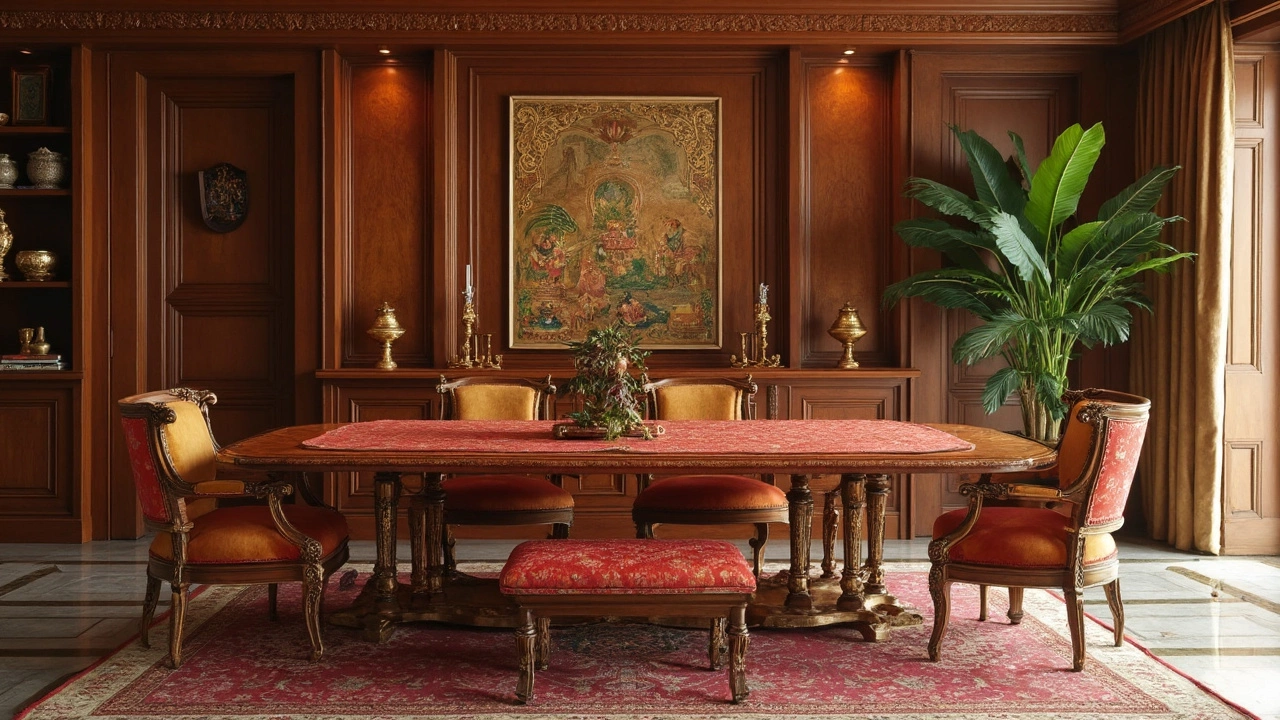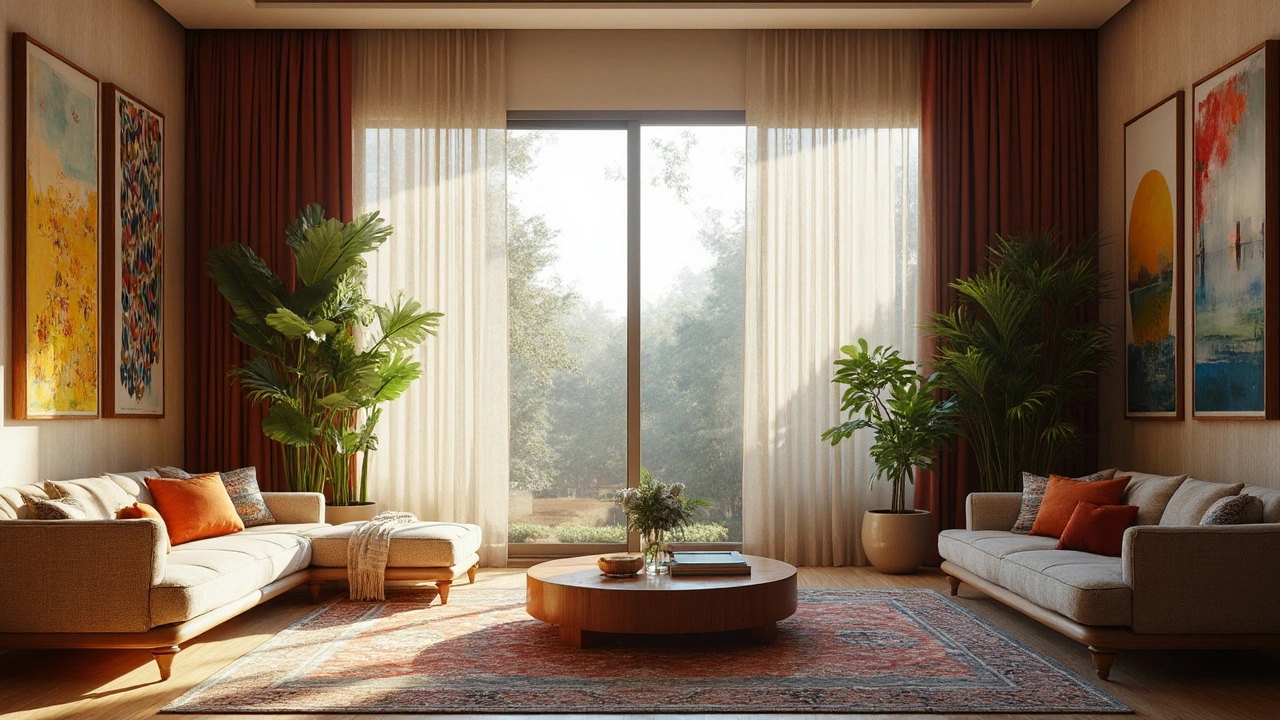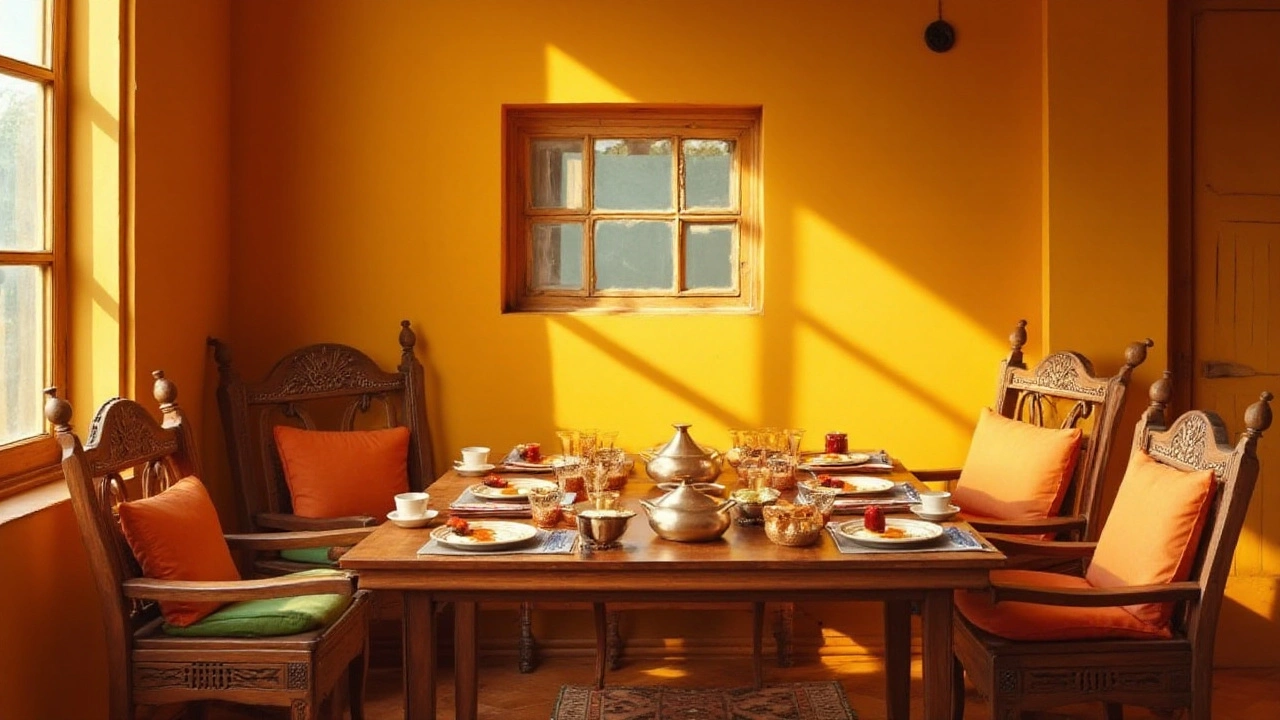Timeless Flooring Colors that Blend with Any Decor
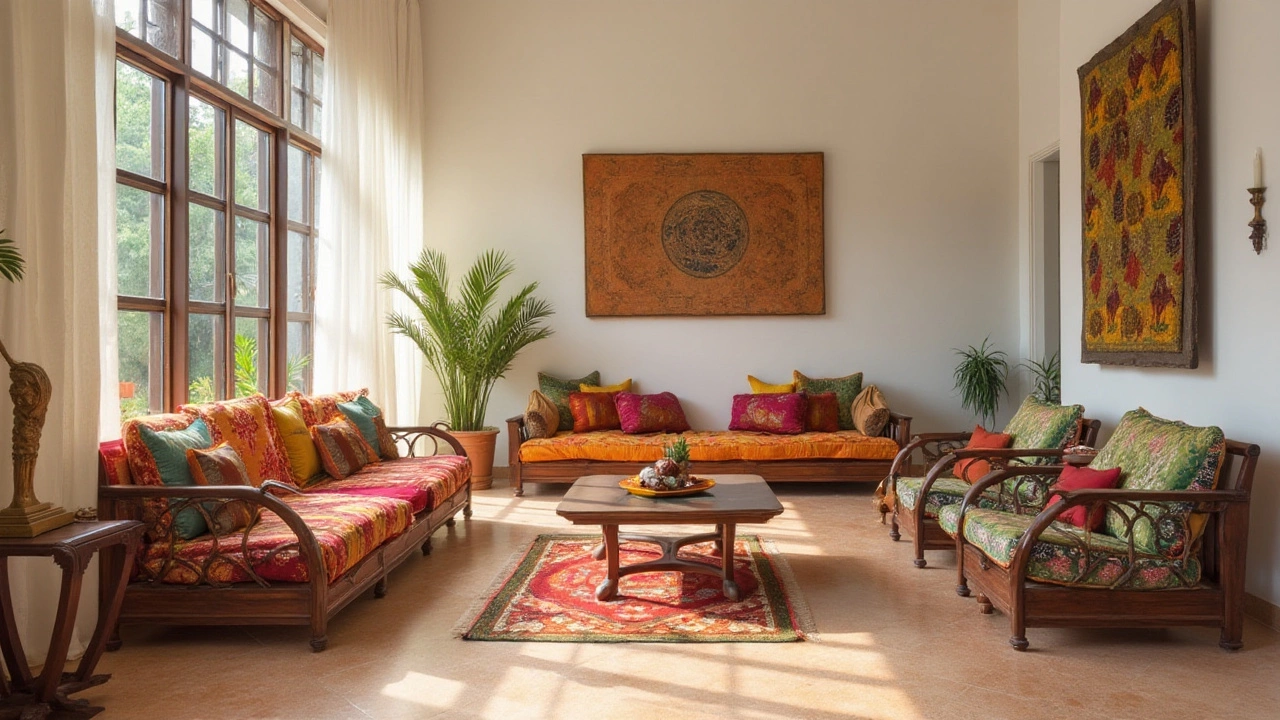
When it comes to selecting flooring for your home, the color you choose sets the tone for every room. It's a decision that will impact your space for years, so picking a shade that stays versatile is key. A floor that coordinates effortlessly with various styles makes redecorating a breeze and ensures longevity in design.
There’s a certain allure to neutral palettes and natural finishes. These shades not only match with anything but also create a warm, welcoming atmosphere. They have an innate ability to balance different styles while fostering a sense of unity across your home. From classic whites to subtle grays, they provide a blank slate ready for any decor vision.
If you lean towards a bolder approach, earthy tones provide depth and richness without overwhelming the senses. They bring the beauty of nature indoors, adding character and groundedness. Exploring these options, along with darker hues, can evoke elegance and sophistication, appealing to those looking to make a statement while keeping things adaptable.
- Understanding Color Psychology
- The Magic of Neutrals
- Earthy Tones and Natural Finishes
- The Elegance of Dark Shades
- Mix and Match: Multi-Tonal Options
Understanding Color Psychology
When diving into home design, it’s vital to appreciate how different colors can shape our emotions and how this knowledge can guide your choice of floor color. Our brains are wired to respond to colors in unique ways, often stirring emotional responses or evoking particular moods. This fundamental concept in design can profoundly impact your living space and should not be overlooked when planning your flooring design. Knowing how colors interact with our psyche provides a toolkit for creating an environment that aligns seamlessly with your desired ambiance.
The color spectrum's warm hues, such as reds, yellows, and oranges, often suggest energy and warmth. These can be excellent choices for rooms where activity and socialization occur, such as kitchens or living areas. In contrast, cooler colors like blues, greens, and lavenders are renowned for their calming influence, making them ideal for bedrooms and bathrooms where relaxation is key. The neutral grays and browns, often favored in home decor, bridge these emotional states, providing a stable and grounding backdrop that supports various design elements.
Historical evidence offers insight into the use and impact of color. For instance, ancient Egyptians and Chinese cultures practiced chromotherapy, or the use of colors to heal. While this isn't a mainstream therapy today, many believe such techniques lay the foundation for modern color psychology. Harnessing these ideas, selecting the right shade can go beyond aesthetics to impact daily well-being and mental health.
“Colors, like features, follow the changes of the emotions,” said Pablo Picasso, highlighting their influence on our inner world.
Aside from emotional implications, cultural meanings also play a role in color selection. Certain colors can carry symbolic significance dependent on the societal context. For example, white may symbolize purity in some cultures, while it might represent mourning in others, showcasing a diverse range of interpretative possibilities. This kaleidoscope of meanings makes selecting flooring not just a matter of taste but also an exercise in subtly communicating underlying themes and personal narratives. By selecting a color like classic oak or soft beige, one ties into long-standing decor traditions valued across many cultures for their versatility and enduring appeal.
The science is equally fascinating when you examine adaptive behaviors in natural environments linked to color. In wildlife, colors are used for survival, signals, and expressions of health or danger. This adaptive mimicry can be seen in humans too, as we use colors in our homes to create environments that encourage desired behaviors. By choosing shades that promote sentiments of either excitement or tranquility, homeowners can craft spaces uniquely suited to their personal lifestyles while subtly nudging their daily routine into a preferred rhythm.
The Magic of Neutrals
Neutrals are often touted as the quintessential choice in flooring design, offering a unique blend of understated elegance and unmatched versatility. These tones, which include shades like beige, ivory, and taupe, are celebrated for their ability to harmonize with virtually any decor style. Whether you lean towards a minimalist aesthetic or favor something more eclectic, neutral colors provide the perfect canvas for your furnishings and accents to take center stage. This adaptability arises because neutrals do not draw attention to themselves; instead, they allow the rest of the room's design elements to shine, creating a cohesive look. It's interesting to note how neutral floors can change their appearance under different lighting, enhancing the ambiance of any space effortlessly.
A major advantage of selecting a neutral floor color lies in its timeless appeal. Unlike bolder colors, which can lose their charm as trends shift, neutral shades remain consistently fashionable. This is supported by design expert Emily Henderson, who notes,
"Neutrals are a reliable staple in the world of design. They offer flexibility and sophistication, allowing homeowners to indulge in more expressive designs elsewhere in their spaces."Moreover, when the time comes to sell your home, neutral flooring can increase its attractiveness to potential buyers by offering them a neutral backdrop to envision their own personal style.
For practical purposes, neutrals are also easier to maintain. They tend to hide dust, pet hair, and minor scratches better than darker or light colors, making them suitable for households with a dynamic lifestyle. In many cases, a neutral-colored floor can help mask minor imperfections that accumulate over time, prolonging the visual appeal of your flooring investment. This durability is further reflected in consumer preferences: in a recent survey, 65% of homeowners reported choosing neutral shades for their new flooring installations, primarily for their resilience and ability to age gracefully.
When considering specific types of neutral flooring, options abound, each lending a distinct texture and vibe to your home. Hardwood floors in light oak or maple can provide a warm and inviting feel, while tiles in soft gray or cream offer a cool, clean look that complements modern decor themes. Laminate and vinyl also offer a vast array of neutral patterns, ideal for homeowners on a budget who do not want to compromise on style. This versatility is not just limited to residential spaces; even in commercial settings, the calming effects and professional aesthetics of neutral flooring are coveted, easily transitioning from homey cafes to sleek office environments.
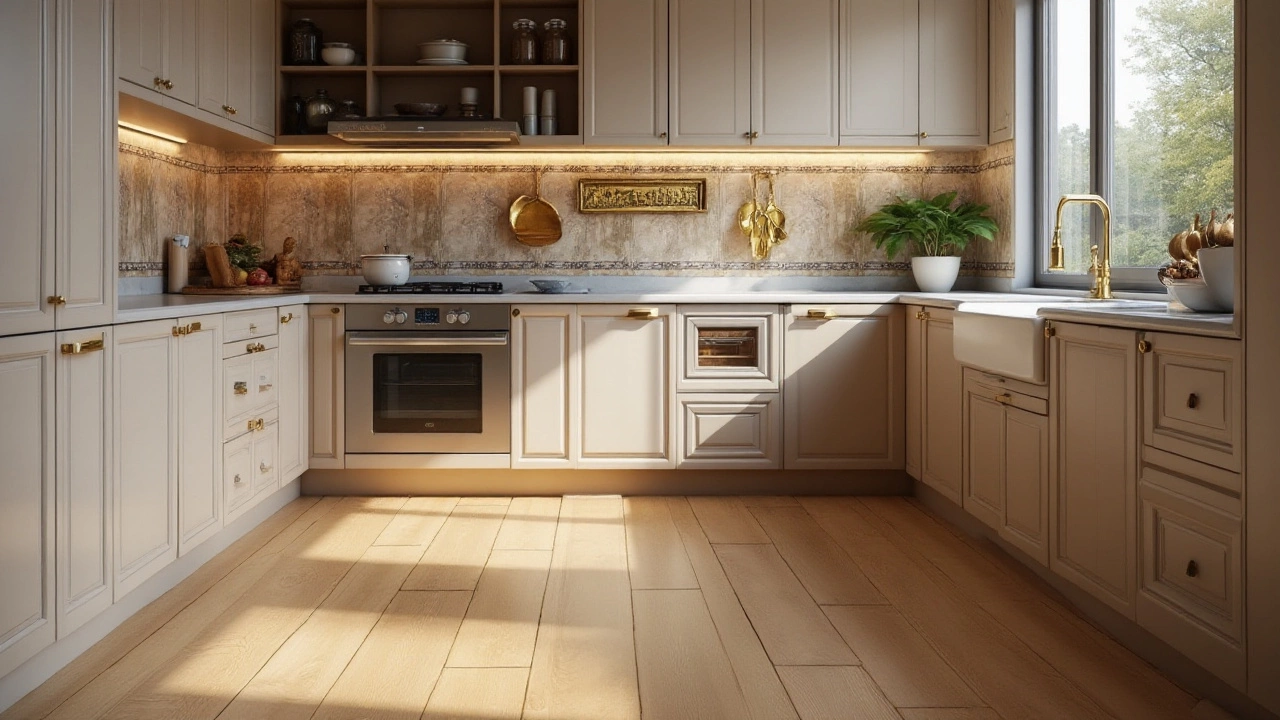
Earthy Tones and Natural Finishes
Earthy tones and natural finishes have long been adored for their ability to bring a touch of the outdoors into our homes, creating a grounded and serene atmosphere. These colors mirror the calming effect of nature, evoking images of warm sands, forest barks, and autumn leaves. By incorporating earthy tones into your flooring, you invoke a sense of balance and tranquility, which can significantly enhance the comfort of your living space.
One of the most compelling aspects of earthy shades is their versatility. Whether you're opting for a rustic chic look in your living room or a contemporary sleekness in the kitchen, these shades adapt beautifully. Earthy tones encompass a wide range of hues from deep chocolate browns to soft beige sands. This means there is an option for every aesthetic, allowing homeowners to blend different design elements fluidly. Pairing these tones with natural finishes such as wood or stone can multiply their effect, emphasizing warmth and texture in a subtle yet striking manner.
According to a study by the National Association of Home Builders, homes with natural material finishes tend to not only appeal to a broader audience but also maintain their market value over time. This makes earthy tone flooring an excellent choice not just for personal enjoyment but as a long-term investment.
“Natural materials have a profound effect on the perceived quality and value of a home,” states design expert Sarah Robinson. “They connect occupants with nature, which inherently boosts mood and well-being.”
Some practical considerations when incorporating these tones include their compatibility with natural light. They often complement sunlit spaces by enhancing the warm undertones and creating a dynamic environment that shifts beautifully throughout the day. Earthy tones can serve as the perfect backdrop for bold furnishings or intricate artwork, offering a canvas that is finished yet refreshingly uncomplicated. For a seamless aesthetic, consider blending shades across different elements like furniture and decor items, thus achieving a coordinated, harmonious space.
Incorporating earthy tones doesn't just stop at the aesthetics. According to the 2022 Interior Design Trends Report, many manufacturers are now also highlighting sustainable practices, offering eco-friendly options within this palette. Flooring options such as bamboo, cork, and reclaimed wood are gaining popularity not just for their visual appeal but also for their environmental benefits. This development aligns perfectly with a growing awareness and commitment to ecological responsibility among homeowners.
The Elegance of Dark Shades
Dark flooring, synonymous with luxury and sophistication, has the power to transform any living space into a realm of elegance. These deeper tones bring an aura of grandeur that is both compelling and enduring. From rich chocolate browns to sleek charcoal grays, these shades are not merely a choice but a statement. They speak to a distinguished taste, echoing sentiments of timeless design that can transcend seasonal trends and fads. One of the most appealing aspects of dark floors is how they complement lighter colored walls and furniture, creating striking contrast and depth. By grounding the space with a darker base, everything in your room naturally pops with more vibrancy.
However, the allure of dark floors extends beyond aesthetic beauty. Practically speaking, they are more forgiving on maintenance than their lighter counterparts. While they may show dust more prominently, they are adept at masking more inevitable blemishes like scratches or dents that occur over time. This means that with the right care, a dark floor can maintain its sleek appearance for years. Floor color indeed enhances the surroundings and accents that you wish to highlight.
It's not just the aesthetic appeal and practicality that draw homeowners to dark shades. Psychologically, these colors provide a comforting feeling, reminiscent of earth and stability. They can evoke a sense of warmth and intimacy, making even the most vast spaces feel cozy and inviting. According to a study conducted by the Paint Quality Institute, darker floor colors are increasingly popular in urban homes as they help to absorb light, reduce glare, and create a sense of calm amid the hustle and bustle.
Incorporating dark flooring design into your home doesn't mean your decor options are limited. On the contrary, they open a world of possibilities since dark floors serve as a neutral base. Imagine pairing a deep espresso-colored floor with a crisp white sofa or vibrant area rugs; the effect is quintessentially chic and contemporary.
"Dark wood floors create the foundation for endless decorating opportunities," notes interior designer Nathan Turner. "They allow for bold furniture choices and colorful accents without overwhelming the space."
Moreover, current advances in materials mean you don’t have to be limited to traditional wood to achieve these colors. Options such as dark vinyl planks or polished tiles in deep shades offer similar effects while often being more durable and cost-effective. These innovations in materials provide the same dramatic impact while catering to a range of budgets and lifestyles. For those inclined to sustainable choices, recycled materials and responsibly sourced woods feature in dark tones, both eco-friendly and stunning, offering responsible home decor solutions.
When choosing dark shades for your floors, consider their impact on the visual size of your room. While dark colors can visually diminish large spaces to make them feel more inviting, in smaller rooms, they might make the space appear even more compact. Balancing them with ample lighting, reflective surfaces, and lighter furnishings can counteract this effect, ensuring the result remains welcoming. Ultimately, a well-crafted dark floor becomes the perfect canvas, allowing your unique style to flourish and adapt, rooted firmly in sophistication and elegance.
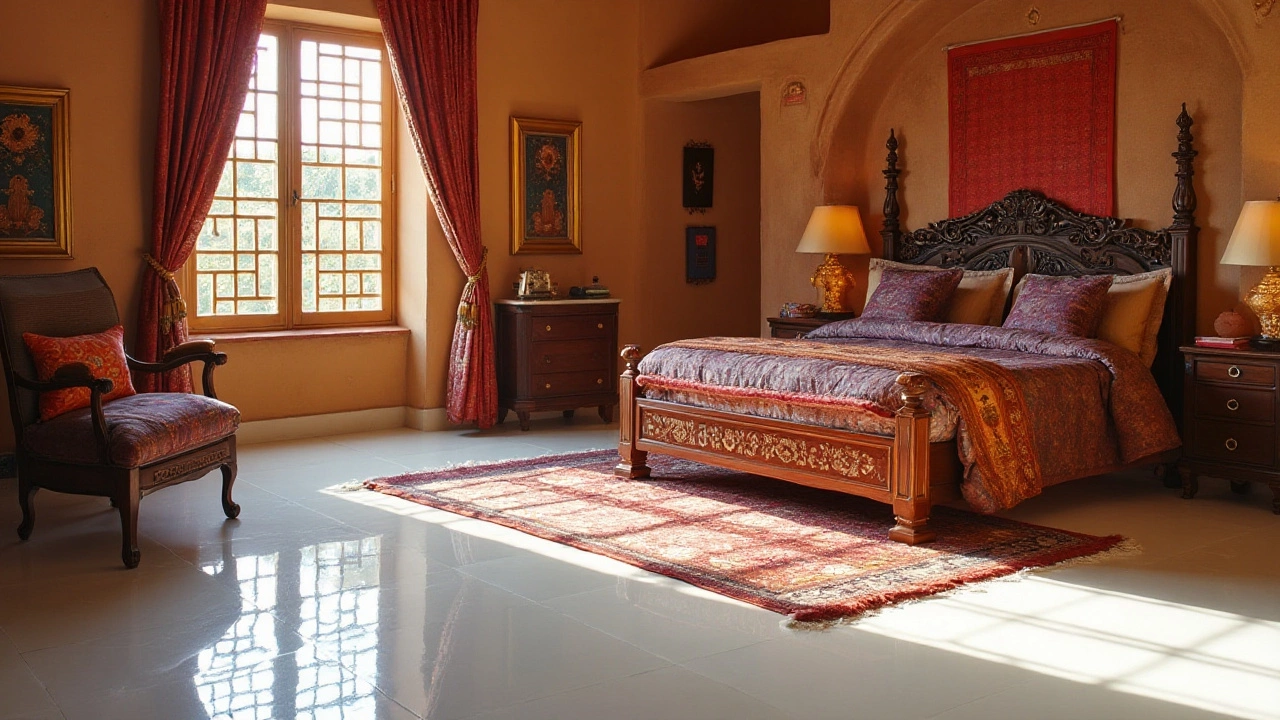
Mix and Match: Multi-Tonal Options
In the dynamic world of interior design, one versatile approach gaining traction is the use of multi-tonal floor color schemes. This strategy elevates the space by introducing a harmony of colors, offering subtle complexity and depth. Imagine standing in a room where the floor itself tells a story, transitioning smoothly from one hue to another, creating an interplay of light and shadow that captivates and delights. The beauty of such an approach lies in its adaptability, striking a perfect balance between traditional aesthetics and modern innovation.
Multi-tonal flooring isn't just a trend; it's a smart choice that adds value and personality. By incorporating a variety of shades, homeowners can evoke feelings of warmth, openness, or even coziness, depending on the area's purpose and mood. Natural wood blends, for instance, often use varying tones of browns and grays to mimic real wood patterns, while luxury vinyl tiles offer a spectrum of colors imitating everything from stone to ceramic. This diversity not only pleases the eye but also conceals wear and tear exceptionally well, making it a practical choice for high-traffic areas.
When implementing multi-tonal designs, context is crucial. Consider the primary function of the room and how different colors might affect its ambiance. For example, darker tones might add an air of elegance to formal living spaces, while lighter hues can make a small room appear larger. An interesting fact from the flooring industry reveals that color transitions are often inspired by nature's own palette, creating a timeless appeal. Industry expert Sarah Richardson notes,
"Using a mixture of tones can anchor the elements in a room, offering versatility that allows for changes in trends without losing the room's essence".This approach not only caters to visual appeal but also provides a tactile experience.
The application of multi-tonal flooring design extends beyond aesthetics. Studies have shown that color coordination can influence psychological effects in spaces, enhancing mood and productivity. A carefully chosen blend of colors can lead to a harmonious environment that supports relaxation or activity, depending on the desired effect. According to a 2021 study by the Color Institute, rooms with varied flooring hues see increased positive engagement from occupants, something homeowners might consider when planning their next design project.
For those looking to embrace this creative approach, starting small might be the key. Consider incorporating a modest yet impactful rug or mat that showcases a range of colors, allowing you to experience the dynamic effect of multiple shades firsthand. Additionally, many manufacturers provide samples or display boards that demonstrate the range of options available, from subtle gradients to bold contrasts. Remember, the goal is to create a cohesive space that mirrors your personal style while standing the test of time. With the right approach, your multi-tonal flooring can become the backbone of your decor, effortlessly weaving together all elements of your space.
